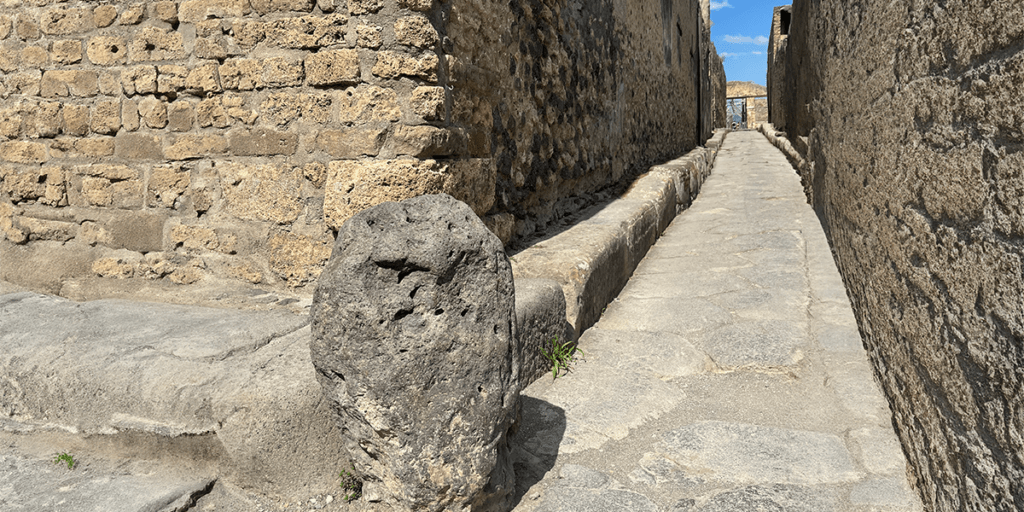Recently, I went to Pompeii. While walking among the ancient city’s well-preserved remains, I took a bunch of pictures. In today’s blog post (and the next), I’ll share one with you. As it turns out, the underlying principle of Visual Management goes way, way back. Let’s travel several centuries back to learn three important lessons!
Rocks: traffic signs and visual statements
See the rock in the above picture? It’s not unique. In Pompeii, we bumped into several of these, typically on street corners. Centuries ago, these rocks served as ‘traffic signs:’ they indicated carts were blocked from taking this turn. Every rock was a clear visual statement: there was no way around, literally and figuratively.
Since good things come in threes, it’s not surprising I’ve learned three lessons from these rocks in southern Italy. What can these predecessors of today’s traffic sign teach us?
1. Show, don’t tell
Sometimes, it’s useful to tell people what they can do. But if you want to prevent them from turning into a certain street (or, more broadly put, taking a certain direction), you should tell them what they can’t do. Or, even better, adhere to a well-known principle: “Show, don’t tell.”
That’s exactly what these rocks did. And it’s what you can do on the work floor, too — if you use Visual Management. For example, one of our customers displays palm trees in different colors to help customer service agents make independent decisions. Green means workload is low and they can take a break; yellow indicates they should consult with the team, since it’s a bit busy; and red represents peak moments that don’t allow for extra breaks.
2. Help people navigate
The ancient rock in Pompeii served as a traffic indicator: in all its simplicity, it showed people whether they could go left or right.
Despite centuries of evolution, things are not much different on today’s work floor. A performance board displays the queue, which tells employees whether they have time to provide customers with some extra information (to increase customer satisfaction) or not. If it’s very busy, they should stay on course and avoid that ‘turn!’
3. Embrace simplicity
We’ve said it before and we’ll say it again: less is more. Like the rock, a performance board provides people with actionable information in the blink of an eye. One image instantly tells them what (not) to do!
Want to explore your Visual Management opportunities? Please don’t hesitate to contact us. We are happy to perform a Quick Scan and discuss your information sharing strategy.

